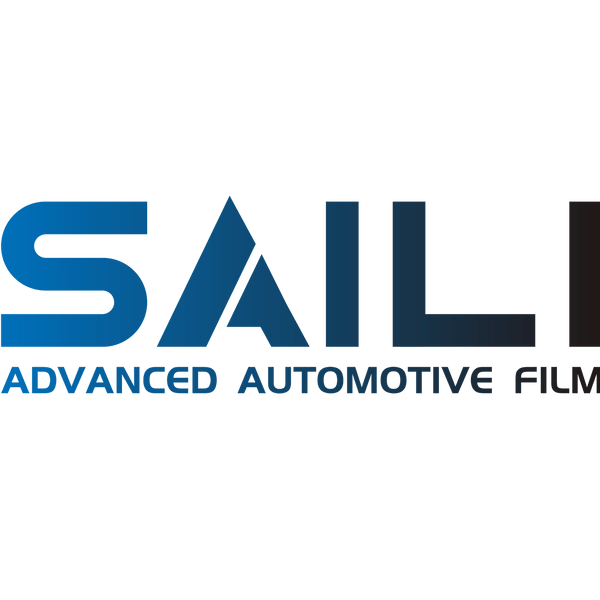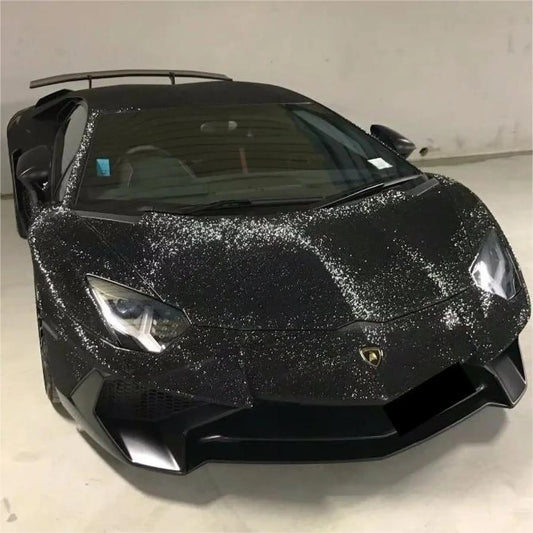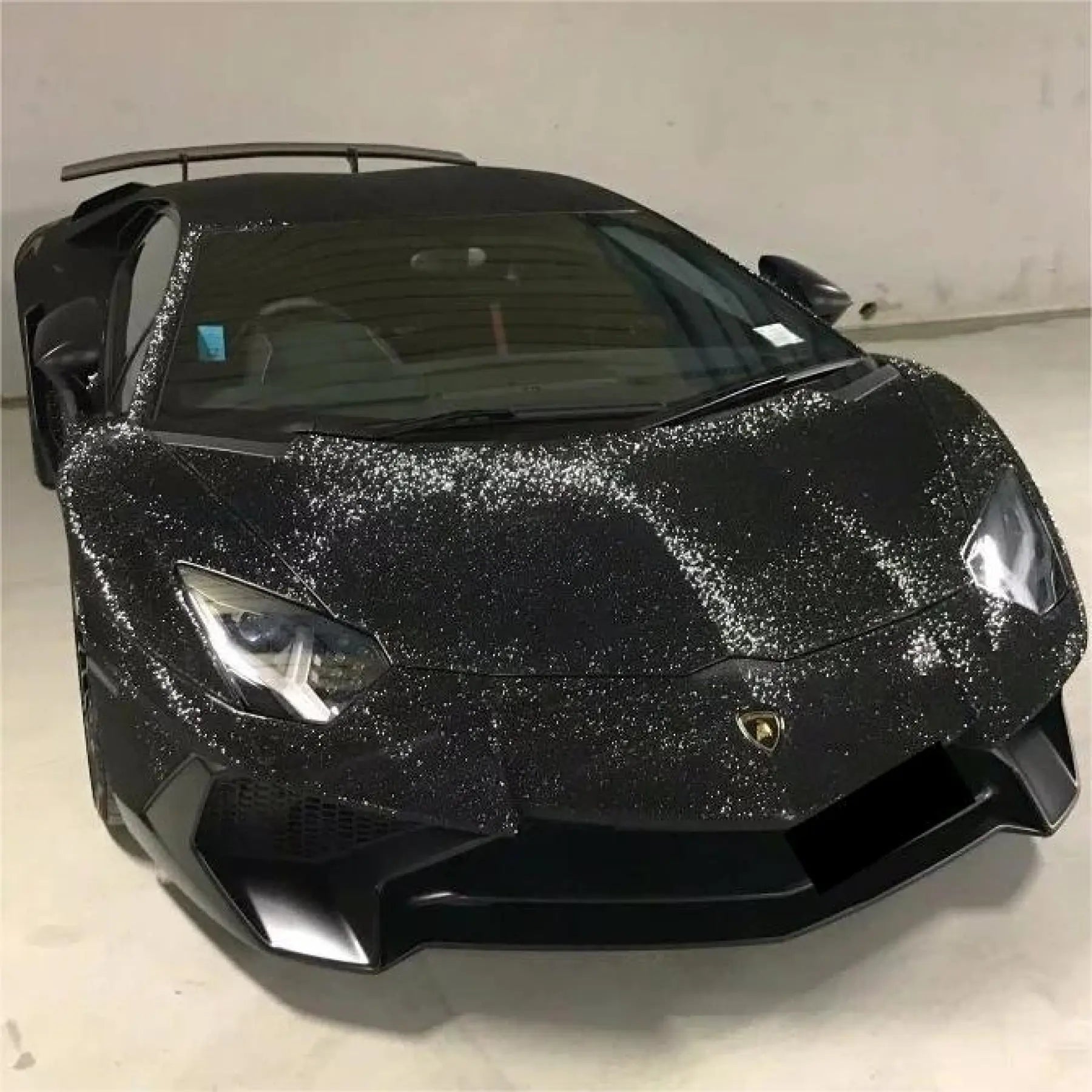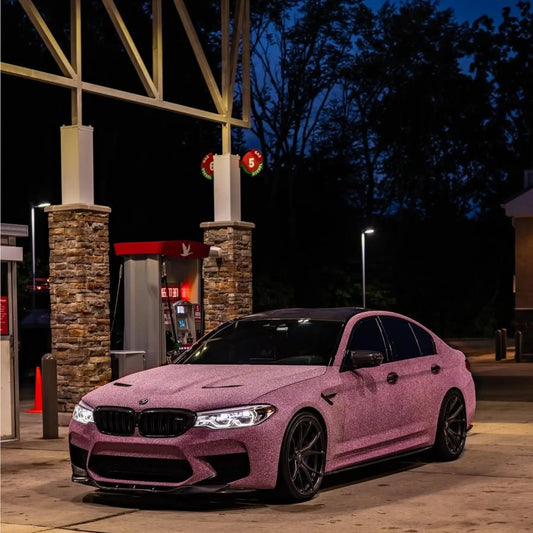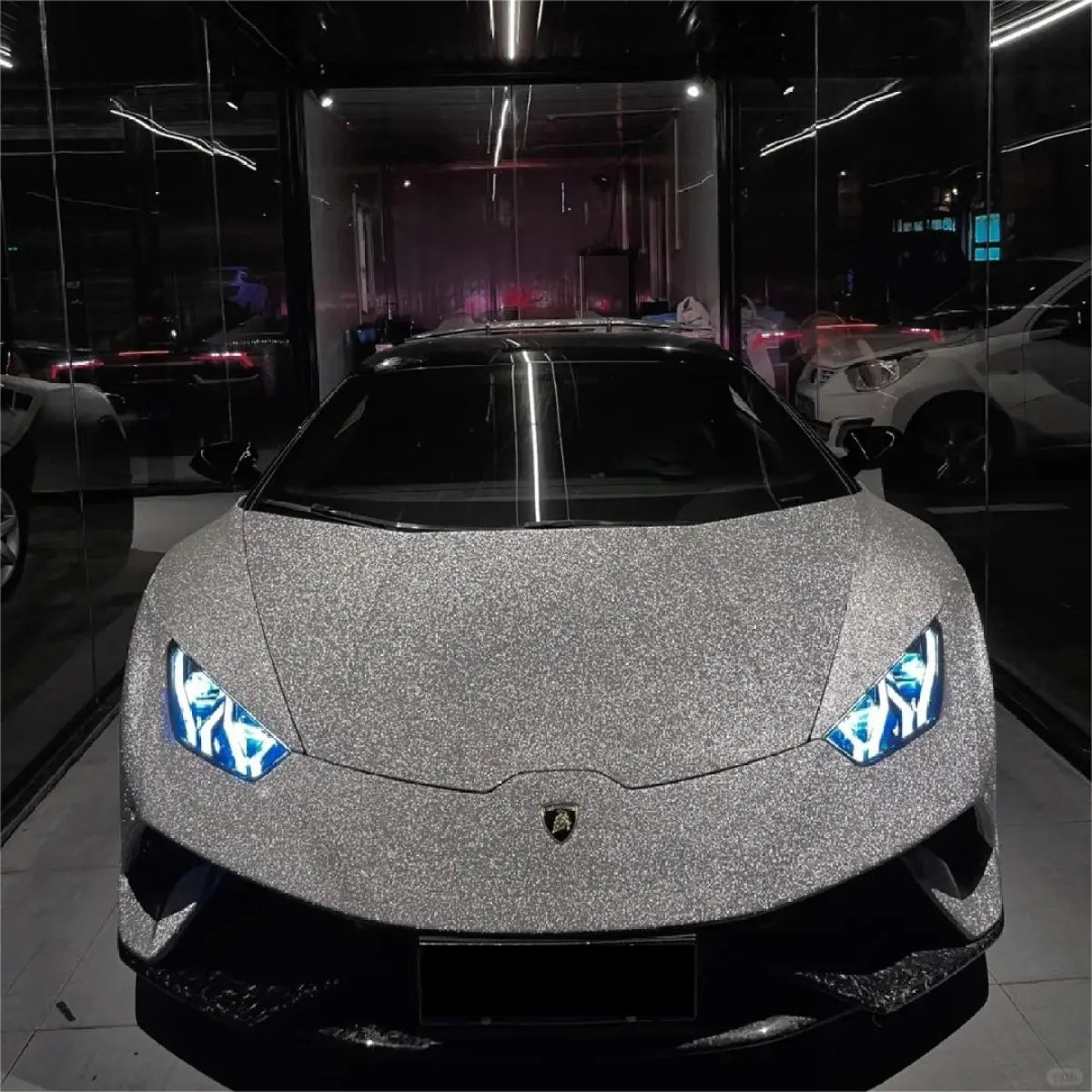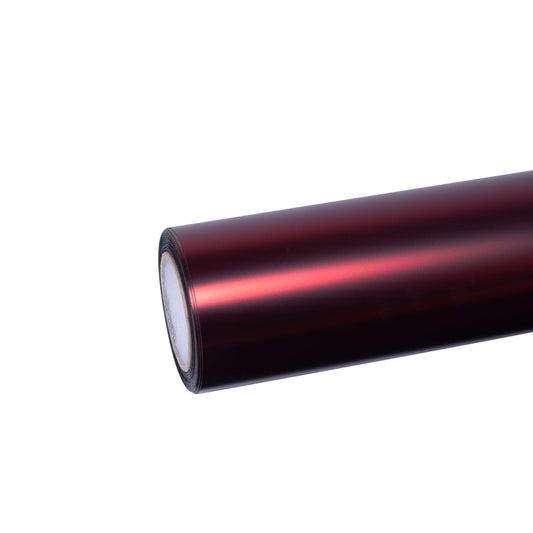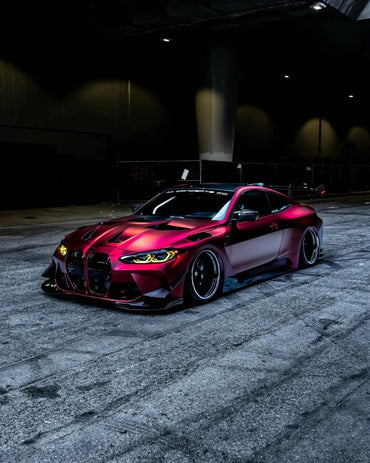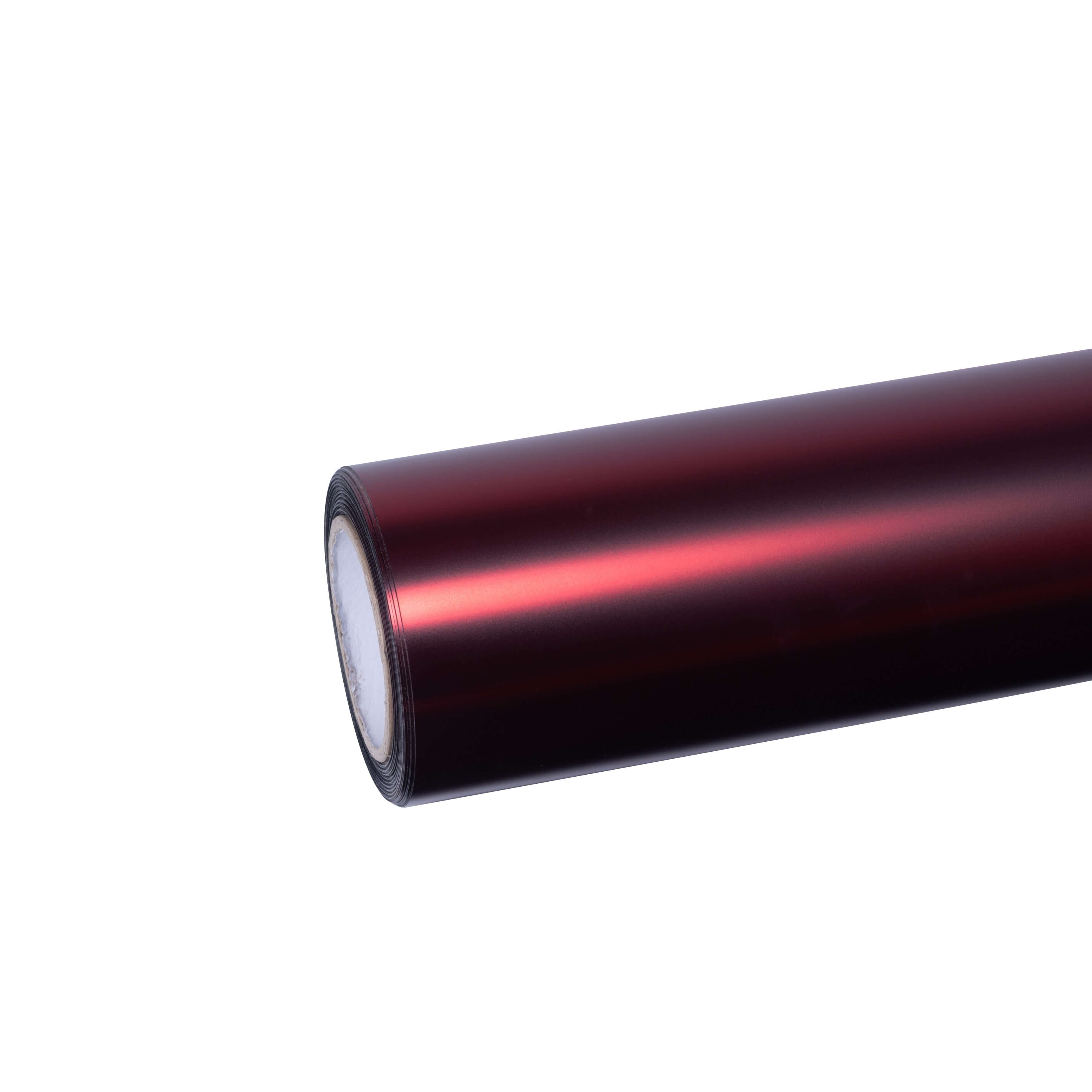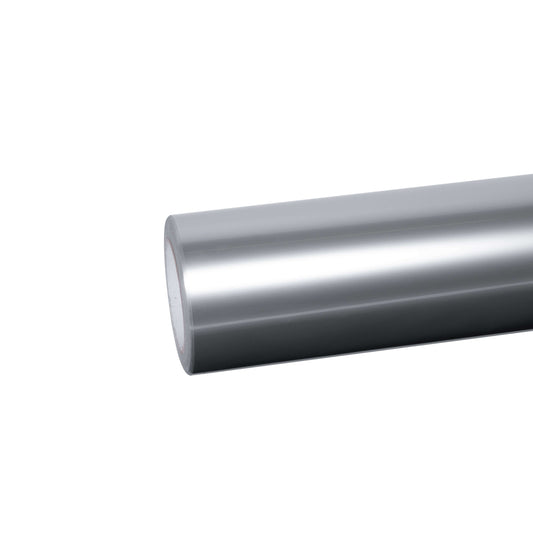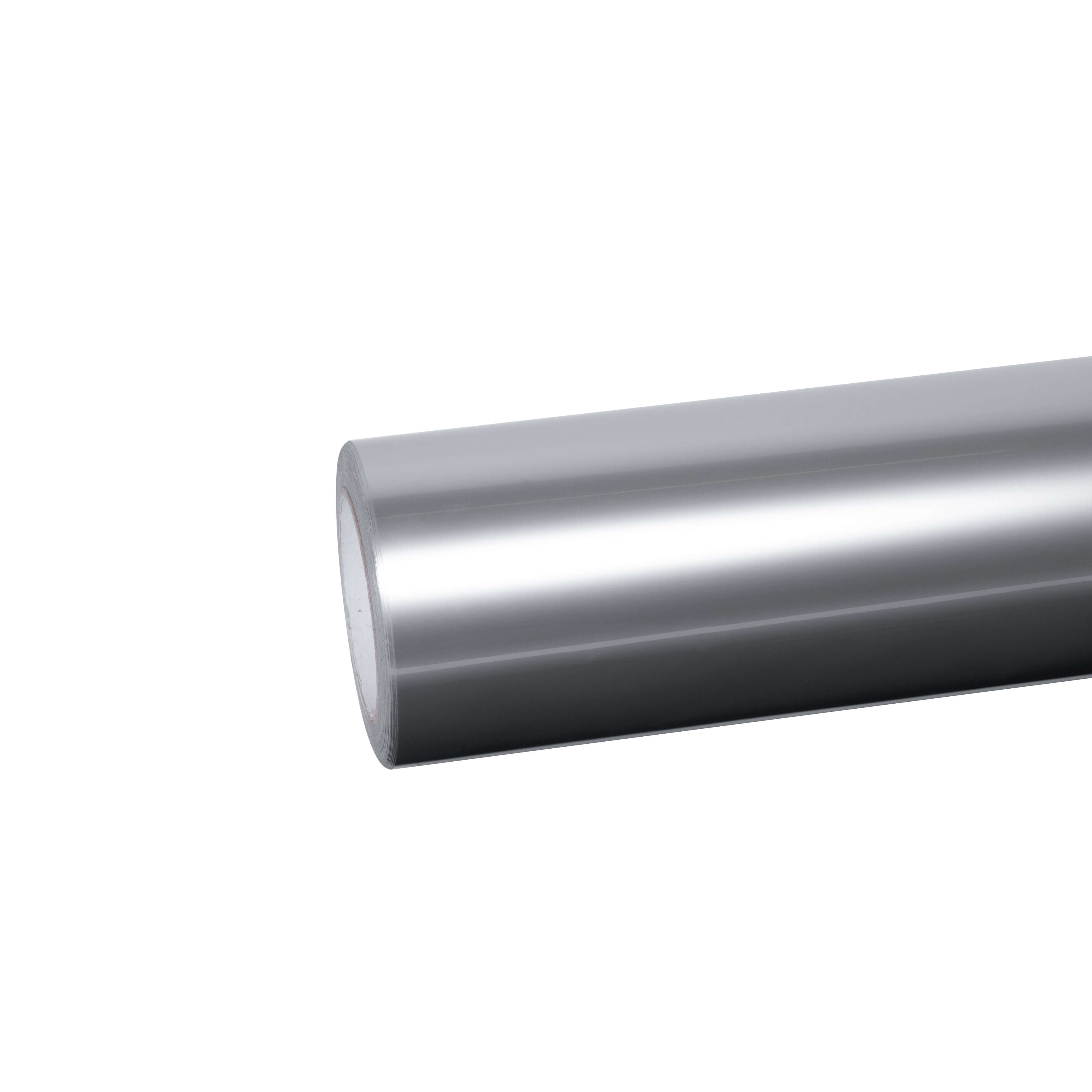The automotive customization landscape in 2025 has reached unprecedented creative heights, with vehicle owners seeking distinctive combinations that push aesthetic boundaries while maintaining protective functionality. Holographic wraps that reflect light in rainbow colors and change appearance depending on viewing angle have become increasingly popular for car enthusiasts who want to showcase unique taste and innovation. When these mesmerizing effects merge with the sophisticated texture of carbon fiber, the result transforms ordinary vehicles into extraordinary rolling masterpieces.
The Rainbow Laser Revolution
Color-shifting vinyl wraps using advanced photochromic and thermochromic films have stepped into the spotlight, with vehicles capable of cycling through iridescent hues like purple flame, deep violet, or resplendent ruby. The rainbow laser vinyl wrap collection represents this cutting-edge technology, featuring galaxy chameleon effects, aurora metallics, and pearlescent sparkle finishes that redefine what's possible in automotive customization.
Understanding Holographic Technology
Rainbow laser wraps utilize specialized pigment layering and light-refractive technology to create their signature color-shifting properties. Unlike traditional solid-color films, these advanced materials incorporate microscopic metallic particles suspended within the vinyl structure. When light strikes the surface, these particles refract wavelengths at different angles, producing the distinctive rainbow effect that changes based on viewer position and ambient lighting conditions.
The Galaxy Chameleon Diamond series exemplifies this technology, offering pink white, blue white, and gold white variations that transition seamlessly through color spectrums. Each viewing angle reveals new hues, ensuring your vehicle never presents the same appearance twice.
Application Versatility
Holographic chrome wraps combine high-gloss finishes with iridescent rainbow effects, creating stunning, eye-catching films that shift colors under different lighting angles. These materials work exceptionally well on various vehicle types:
Sports Cars: Enhance aggressive body lines with Aurora Metallic Chameleon finishes that emphasize curves and contours through dynamic color transitions.
Luxury Sedans: Apply pearlescent sparkle treatments that add sophistication without overwhelming elegant design language.
SUVs and Trucks: Utilize Galaxy Gloss Metallic options that provide commanding presence while maintaining professional appearance.
Classic Vehicles: Incorporate subtle holographic accents that modernize vintage aesthetics without compromising authenticity.
Carbon Fiber: The Performance Aesthetic
While rainbow laser effects deliver visual drama, 3D carbon fiber wrap materials provide the technical, performance-oriented aesthetic that resonates with automotive enthusiasts worldwide. The distinctive weave pattern has become synonymous with high-performance engineering, motorsport heritage, and cutting-edge technology.
The Appeal of Carbon Texture
Carbon fiber's popularity extends beyond mere appearance. The material's association with Formula 1 racing, aerospace applications, and supercar manufacturing creates immediate performance credibility. When applied as vinyl wrap, carbon fiber texture delivers this prestigious aesthetic without the prohibitive cost and weight of genuine composite materials.
Modern 3D carbon fiber films feature depth and dimensionality that closely replicates authentic woven carbon. The textured surface creates tactile interest while the distinctive pattern catches light in ways that enhance vehicle contours and character lines.
Strategic Carbon Placement
Professional customization considers optimal carbon fiber placement for maximum visual impact:
Hood Applications: Full carbon hoods create focal points that draw eyes toward the front fascia while suggesting performance upgrades beneath.
Roof Panels: Carbon roofs reduce visual weight, creating the impression of a lower center of gravity particularly effective on sports coupes and performance sedans.
Mirror Covers: Small but highly visible carbon accents provide subtle performance cues without overwhelming overall design.
Side Skirts and Splitters: Carbon lower body elements enhance aggressive stance while providing visual separation between paint and trim.
Interior Trim: Matching interior carbon accents create cohesive themes that connect exterior appearance with cabin atmosphere.
The Art of Combination: Merging Contrasting Finishes
2025 customization trends emphasize themed wraps, bold combinations, and creative expression that transforms vehicles into unique mobile works of art. The strategic pairing of rainbow laser effects with carbon fiber texture exemplifies this philosophy, creating contrast that amplifies both elements' strengths.
Design Principles for Mixed-Media Applications
Successful combination designs follow fundamental aesthetic principles that prevent visual chaos:
Proportion Balance: Maintain roughly 60-40 or 70-30 ratios between primary and accent materials. For example, predominantly liquid chrome wrap body panels with carbon fiber hood and roof create appealing balance without overwhelming the eye.
Complementary Placement: Position contrasting materials to enhance natural body lines and architectural features. Carbon fiber along lower body panels grounds rainbow laser upper sections, creating visual stability.
Transition Management: Use trim pieces, accent stripes, or subtle gradient zones to bridge between dramatically different finishes, preventing jarring visual discontinuity.
Color Coordination: Select rainbow laser variants whose color range complements carbon fiber's dark, technical appearance. Aurora whites, blue whites, and pearl pinks create particularly effective contrasts against deep carbon weaves.
Popular Combination Strategies
The Racing Heritage Theme
This approach emphasizes motorsport aesthetics by using carbon fiber as the primary material with rainbow laser accents on specific performance elements:
- Carbon fiber hood, roof, and mirror covers
- Rainbow laser door panels creating dynamic side profile
- Carbon fiber rear diffuser and spoiler
- Metallic vinyl wrap body with strategic carbon overlays
The Future-Forward Look
Prioritize holographic effects while using carbon fiber as grounding technical elements:
- Galaxy Chameleon Diamond primary body coverage
- Carbon fiber lower body panels and front splitter
- Pearlescent Sparkle Glitter roof
- Crystal vinyl wrap accents on trim pieces
The Luxury Hybrid
Balance sophistication with visual interest through measured application:
- Ultra matte wrap base color
- Aurora Metallic Chameleon hood and trunk lid
- Carbon fiber side skirts and mirror caps
- Subtle rainbow laser pinstriping along character lines
The Bold Statement
Maximum visual impact through dramatic contrast and extensive coverage:
- Full rainbow laser body application
- Carbon fiber graphic overlays in geometric patterns
- Dual color dream vinyl wrap transitional zones
- Coordinated glitter sparkle car wrap details
Technical Considerations for Multi-Material Applications
Custom combinations require careful planning to ensure personalized color palettes match unique styles. Installing multiple wrap types on a single vehicle introduces technical challenges that professional installers must address for optimal results.
Material Compatibility
Different vinyl formulations possess varying characteristics:
Stretch Properties: Carbon fiber films typically exhibit different elongation limits compared to holographic materials. Installers must account for these differences when wrapping compound curves.
Adhesive Systems: Some materials use aggressive adhesives while others employ repositionable formulations. Mixing adhesive types on adjacent panels requires careful edge sealing to prevent premature failure.
Thermal Sensitivity: Rainbow laser films often incorporate temperature-sensitive pigments that require specific heat application techniques. Carbon fiber films may tolerate higher post-heat temperatures.
Thickness Variations: Textured carbon fiber wraps measure thicker than smooth holographic films. Transition points must be carefully beveled and sealed to prevent edge lifting.
Installation Sequencing
Professional installation follows systematic approaches:
- Base Preparation: Thoroughly clean and degrease all surfaces, paying particular attention to transition zones between different materials.
- Primary Coverage: Install the dominant finish first, typically the rainbow laser or primary body color. This establishes foundational appearance and allows accurate placement of accent materials.
- Accent Application: Apply carbon fiber or contrasting elements second, overlapping primary material edges by 2-3mm to ensure secure bonding.
- Edge Sealing: Use edge sealing compounds on all material transitions, particularly where different adhesive systems meet.
- Post-Heating: Apply appropriate heat to each material type, respecting individual thermal requirements to activate adhesives and relieve tension.
Protection Meets Performance
Beyond aesthetics, combining TPU paint protection wrap technology with decorative finishes creates comprehensive defense systems for vehicle surfaces.
Protective Benefits
Modern vinyl wraps provide substantial protection:
UV Resistance: Both rainbow laser and carbon fiber films block harmful ultraviolet radiation that causes paint fading, oxidation, and clear coat failure. According to Wikipedia's article on vinyl films, these materials can block up to 99% of UV penetration.
Impact Absorption: Thick premium vinyl films absorb stone chips and minor impacts that would otherwise damage factory paint finishes.
Chemical Barrier: Vinyl wraps create impermeable barriers against bird droppings, tree sap, road salt, and other corrosive contaminants that attack automotive paint.
Scratch Resistance: Textured carbon fiber surfaces naturally resist and hide minor scratches that would be highly visible on smooth painted surfaces.
Maintenance Advantages
Premium wraps protect car paint from environmental issues including acid rain, bird droppings, bug guts, UV rays, and tree sap, potentially saving hundreds annually in paint maintenance costs. The hydrophobic properties inherent to many modern vinyl formulations also simplify cleaning routines and reduce water spotting concerns.
Regular maintenance requires only:
- Hand washing with pH-neutral automotive shampoos
- Microfiber drying cloths using gentle blotting techniques
- Quarterly application of vinyl-safe spray sealants
- Immediate contamination removal using appropriate spot cleaners
Color Theory and Visual Psychology
Vehicle color should reflect personality, with color-shifting wraps like rainbow or holographic shades offering dazzling, attention-grabbing looks that turn heads. Understanding color psychology helps create wrap designs that communicate intended messages.
Rainbow Spectrum Psychology
Different color families within rainbow laser wraps evoke distinct emotional responses:
Blue-Based Shifts: Aurora whites and blue white chameleons suggest trustworthiness, professionalism, and advanced technology—ideal for luxury sedans and executive vehicles.
Pink-Based Transitions: Pearl pink and rose gold variants communicate creativity, individuality, and modern sophistication—perfect for personal expression and lifestyle branding.
Gold-Based Effects: Metallic golds and champagne tones project wealth, success, and exclusivity—especially effective on premium and exotic vehicles.
Multi-Spectrum Options: Full rainbow transitions express creativity, boldness, and refusal to conform—making powerful statements for show cars and enthusiast builds.
Carbon Fiber Associations
The universal interpretation of carbon fiber as high-performance material creates consistent psychological responses:
- Technical sophistication and engineering excellence
- Performance capability and speed
- Motorsport heritage and racing credibility
- Modern technology and cutting-edge innovation
- Attention to detail and quality consciousness
Combining rainbow laser's emotional dynamism with carbon fiber's technical authority creates compelling visual narratives that communicate both style consciousness and performance appreciation.
Installation Best Practices
Professional car wrap installation remains crucial for achieving exceptional results that maintain impressive appearance for years. While sample kits allow enthusiasts to test materials before committing to full installations, complex multi-material applications demand professional expertise.
Preparation Requirements
Surface preparation determines installation success:
Contamination Removal: Strip all waxes, sealants, and residues using professional-grade surface cleaners. Even microscopic contamination prevents proper adhesion.
Paint Assessment: Evaluate factory paint condition carefully. Damaged, flaking, or poorly repaired paint will fail beneath vinyl, potentially causing wrap adhesion issues.
Environmental Control: Maintain installation bay temperatures between 68-75°F with moderate humidity levels. Extreme temperatures or humidity affect adhesive activation and vinyl flexibility.
Panel Inspection: Document existing damage with photography to prevent post-installation disputes about pre-existing issues.
Tool Requirements
Professional installations utilize specialized equipment:
- Infrared thermometers for precise heat monitoring
- Multiple squeegee types (soft, medium, hard) for different materials
- Precision cutting tools with safety guards
- Heat guns with variable temperature control
- Edge sealing solutions for long-term durability
- Surface prep solutions specifically formulated for vinyl
The complete wrapping tools collection provides everything necessary for professional-quality results, whether tackling DIY projects or establishing professional wrap businesses.
Cost Considerations and Value Propositions
Multi-material custom installations represent significant investments, typically ranging from $3,500 to $7,000 for complete vehicle coverage depending on vehicle size, material selection, and design complexity. However, this expense delivers substantial value through multiple channels.
Comparative Economics
Paint Alternative: Custom multi-stage paint jobs requiring similar visual complexity cost $15,000 to $30,000 and offer no reversibility. Paint protection on custom finishes adds another $3,000 to $6,000.
Lease Protection: Vehicle wraps allow lessees to dramatically personalize vehicles without violating lease agreements or risking security deposit forfeiture.
Resale Preservation: Original factory paint preserved beneath removable wraps commands $2,000 to $5,000 premiums in resale markets compared to repainted or damaged vehicles.
Business Application: Commercial vehicles wrapped for business purposes generate tax-deductible advertising expenses while building brand recognition through mobile marketing.
Longevity Factors
Quality installations using premium materials deliver 3-7 year service lives depending on:
- Geographic location and UV exposure intensity
- Storage conditions (garage vs. outdoor parking)
- Maintenance consistency and technique
- Vehicle usage patterns and mileage
- Material quality and adhesive systems
Colored paint protection film options extend these timelines further through enhanced durability and self-healing properties.
Trending Combinations for 2025
Current trends include monochrome wraps paired with bold accent colors, abstract geometric designs, and iridescent rainbow wraps that shift colors depending on light conditions. These movements inform the most popular rainbow laser and carbon fiber combinations currently gaining traction.
The Cyberpunk Aesthetic
This futuristic theme combines technology-forward materials:
- Metallic chameleon base with purple-to-blue shifts
- Carbon fiber geometric patterns overlaid strategically
- Liquid chrome wrap accent stripes
- Complementary best sellers materials for trim details
The Elegant Performance Build
Sophisticated approach balancing luxury and sport:
- Pearl white base with subtle aurora shimmer
- Carbon fiber hood with center accent stripe
- Gloss metallic champagne side panels
- Coordinated carbon interior trim
The Show Stopper
Maximum impact design for exhibitions and events:
- Full galaxy chameleon diamond coverage
- Carbon fiber body kit overlays
- Pearlescent sparkle roof panel
- Custom graphic integration
The Motorsport Tribute
Racing-inspired themes celebrating track heritage:
- Carbon fiber majority coverage
- Rainbow laser racing stripes down center
- Car vinyl wrap sponsor graphics
- Performance brand collaborations
Future Developments and Innovations
Innovations like smart wraps and augmented reality tools are revolutionizing the industry, with future wraps potentially including instant color changes and interactive designs . Several emerging technologies will shape next-generation combinations.
Thermochromic Integration
Temperature-reactive pigments that change color based on heat could create dynamic effects where carbon fiber sections reveal rainbow laser underlays as vehicle components warm during operation.
Embedded LED Technology
Thin, flexible LED arrays integrated within vinyl layers could illuminate carbon fiber weaves or activate rainbow patterns on demand through smartphone controls.
Self-Healing Advancements
Enhanced polymer formulations incorporating more aggressive self-healing properties will extend service life while maintaining pristine appearance despite minor damage.
Sustainable Materials
Bio-based vinyl formulations and recyclable substrates will address environmental concerns while delivering equivalent performance to traditional petroleum-based materials.
Professional Installation vs. DIY Approaches
While enthusiastic vehicle owners can tackle simple single-panel applications using sample kits for practice, complex multi-material installations demand professional expertise for several compelling reasons.
Skill Requirements
Professional installers possess:
- Years of experience managing material stretching and tension
- Understanding of heat application for various vinyl types
- Pattern development skills for complex curves
- Problem-solving abilities for unexpected complications
- Quality control standards ensuring consistent results
Warranty Considerations
Many premium material manufacturers void product warranties if installation occurs outside certified professional facilities. Professional installations typically include service warranties covering workmanship defects.
Risk Mitigation
Failed DIY installations risk damaging expensive materials through improper technique. Professional installers absorb this risk through insurance coverage and replacement material access.
For additional guidance on wrap installation standards and industry best practices, consult the Professional Decal Application Promoters Association (PDAA) resources.
Making Your Vision Reality
The creative possibilities when combining rainbow laser effects with carbon fiber texture remain limited only by imagination and budget. Whether pursuing subtle sophistication or dramatic boldness, this innovative approach to vehicle customization delivers distinctive results impossible through traditional single-material applications.
Success requires careful planning, quality material selection, and professional execution. By understanding the principles of proportion, color theory, and technical compatibility, custom enthusiasts can create cohesive designs that turn ordinary vehicles into extraordinary expressions of personal style while delivering comprehensive paint protection.
The car vinyl wrap collection provides the foundation for these creative endeavors, offering premium materials engineered for durability, visual impact, and installation ease. When combined with strategic carbon fiber accents, these advanced films transform automotive customization into true art form.
For inspiration on cutting-edge automotive design trends, explore resources at SEMA (Specialty Equipment Market Association) showcasing the latest innovations from industry leaders worldwide.
Understanding Color-Shifting Vinyl Technology
Carbon Fiber Wrap Installation Techniques
Custom Wrap Design Principles
